This can be useful to monitor a mission critical application on database availability. It’s also a cheap solution to just monitor the connection state of an Oracle database, rather then installing an (expensive) third party Oracle management pack. Off course these packs have a lot more monitors then the connection state, but that might not always be an requirement.
To get this done, the following steps must be taken:
- Install Oracle client OleDB provider on the watcher node
- Test the Oracle client OleDB provider, and connection to the database
- Add OleDB monitoring in SCOM
- Add associated runas user profiles
The watcher node can be any machine containing the SCOM agent.
It’s important to have the right Oracle client version (I used version 11), for 32bit versions use the 32bit Oracle client. For 64bit use the 64bit Oracle client version. Both are available on the Oracle website. If you don’t use the correct version (e.g. 32bit on 64bit) you might get “Class unknown” errors within SCOM.
Start the Oracle installation, on the first step in the installation wizard choose “Custom” and click “Next”
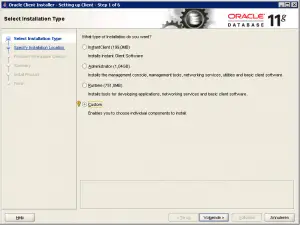
On the next page select your favorite language(s), then pick a location for the Oracle client (beware it’s huge, even for one component)
In the “Available Product Components” step select the following component (Oracle Provider for OLEDB:
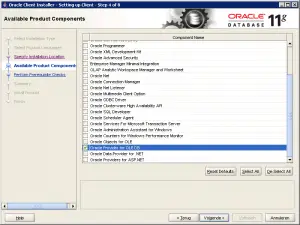
Finish the installation.
Note:you also need to setup Oracle’s tnsnames file, this is beyond the scope of this article. Consult your Oracle DBA.
Test the Oracle client OleDB provider, and connection to the database
To test a OleDB connection, you can use a UDL file. This is a connection file, which launches a wizard once you click it.
Use the following steps to create an UDL file:
1. Make sure in Windows Explorer, Tools->Folder Options, View Tab, that “Hide file extensions for known file types” is not checked.
2. Right click on Windows desktop, and select New->Text File.
3. Name the file “Test.udl”. The icon for the file should now be the special “UDL” icon.
4. Double click the file to open the Data Links dialog.
5. Click on the “Provider” tab. Select “Oracle Provider for OLE DB”.
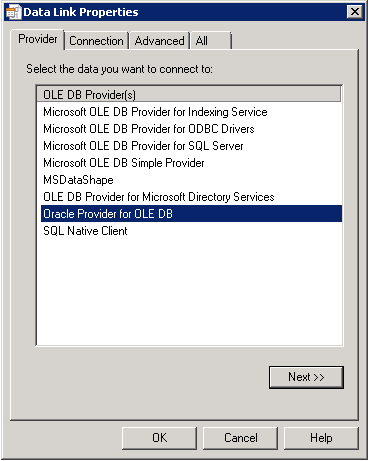
6. Click on the “Connection” tab. In the first dialog box (server name) type the oracle service ID (the name defined in the tnsnames file)
7. Specify the credentials (username and password) in the same dialog box.
8. Click “Test Connection”, you should now see this embracing message :-)

Add OleDB monitoring in SCOM
The next step is to add monitoring to SCOM. Start the SCOM operations manager console and click on “Authoring”.
Within this view, click on “Add Monitoring Wizard” on the left hand side.
To add an OleDB watcher, use the following steps:
1. In the “Select Monitoring Type” step select “OLE DB Data Source”, click “Next”
2. Within the general properties step specify a name for the monitor and choose a Management Pack for your custom monitoring (Microsoft recommends not to use the default management pack here, so create a new one!)
3. In the Connection String dialog click on the “Build…” button. Choose any random Provider (we will change the connection string later on) enter a random computer name and database as well. Make sure you check: “Use Simple Authentication RunAs Profile created for this OLE DB data source transaction”, this is important.
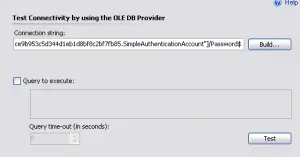
4. Enter Query performance thresholds, if this is required.
5. Within the “Watcher Nodes” step, select the machine on which we installed the Oracle client.
6. Finish the wizard.
You should now end up with an OleDB Data Source within SCOM.
Open the data source and navigate to the “Connection String” tab.
Change the connection string in to the following format:
Provider=OraOLEDB.Oracle;Data Source=TEST;User Id=$RunAs[Name="OleDbCheck_b7035c5b5d6149b684df79089e99dc07.SimpleAuthenticationAccount"]/UserName$;Password=$RunAs[Name="OleDbCheck_b7035c5b5d6149b684df79089e99dc07.SimpleAuthenticationAccount"]/Password$Replace the RunAs variables with the ones generated by the wizard. The data source is the Oracle SID, the same you used to test before. The provider name is the short (internal) name for the Oracle Provider for OLEDB.
Save the OLEDB Data Source.
Add associated runas user profiles
If you checked the “Use Simple Authentication RunAs Profile created for this OLE DB data source transaction” during the wizard you should end up with a preset RunAs profile for this monitor. You can find it under Administration->Run As Configuration->Profiles in the operations manager console.
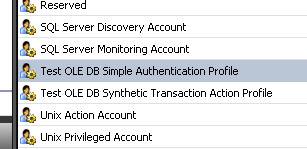
Double click this “simple authentication” RunAs profile.
To add a “Run As Account” follow the following steps:
1. In the “Run As Profile Wizard” click the “Run As Accounts” tab.
2. Click on the “Add…” button to add an account.
3. Click on “New…”, the “Create Run As Account Wizard” should now start. Skip the introduction.
4. On the general properties page, select the run as account type. Set this to Simple Authentication and specify a display name.
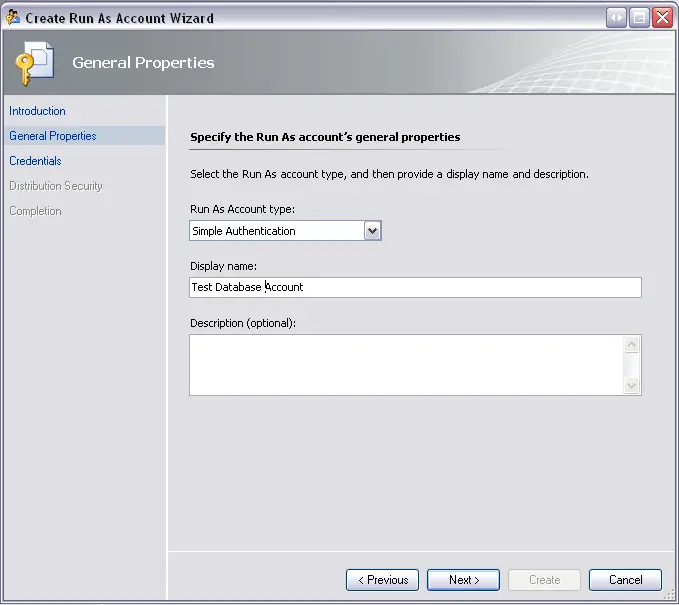
5. On the credentials tab specify the account name and password.
6. Select a distribution security option, based on your preference. I used the More Secure option (you need to reopen the account under the accounts pane to distribute it to your watcher node)
7. Finish the “Create Run As Account Wizard”
8. Click “OK” and finish the “Run As Profile Wizard”
You have now configured the Run As profile.
To see the result of all this work, open the “OLE DB Data Source State” view within the monitoring pane. This is located underneath the “Synthetic Transaction” folder.
This could take a while! (It took about 15 minutes in my environment)
Maarten Damen
Hiç yorum yok:
Yorum Gönder